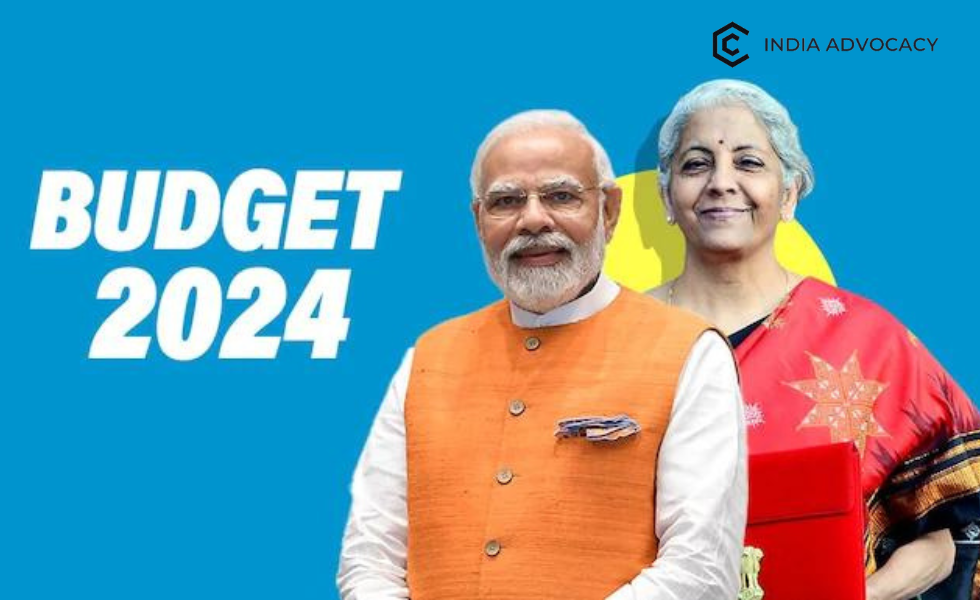
The budget presented by Nirmala Sitharaman, Hon’ble Finance Minister, focuses on employment, skilling, MSMEs, and the middle class, with an overarching goal of “Viksit Bharat” or Developed India. It introduces nine priorities to generate ample opportunities for all, suggesting specific actions and reforms to realize these goals. Here’s a detailed overview:
Budget Theme
- Focus Areas: Employment, skilling, MSMEs, middle class.
- Prime Minister’s Package: 5 schemes and initiatives to facilitate opportunities for 4.1 crore youth over 5 years with a central outlay of INR 2 lakh crore.
- Provision: INR 1.48 lakh crore for education, employment, and skilling.
Budget Priorities
1. Productivity and Resilience in Agriculture
- Transforming Agriculture Research: Focus on productivity and climate-resilient varieties with funding in challenge mode.
- Release of New Varieties: 109 high-yielding and climate-resilient varieties of 32 crops.
- Natural Farming: Initiation of 1 crore farmers into natural farming.
- Bio-Input Resource Centres: Establishment of 10,000 centers.
- Pulses and Oilseeds: Strategy for self-sufficiency.
- Vegetable Production: Development of large-scale clusters near major consumption centers.
- Digital Public Infrastructure for Agriculture: Implementation in partnership with states covering 6 crore farmers.
- Shrimp Production & Export: Support for Nucleus Breeding Centres and financing through NABARD.
- National Cooperation Policy: Drafting to boost rural economy and employment.
- Budget Allocation: INR 1.52 lakh crore for agriculture and allied sector.
2. Employment & Skilling
- Employment Linked Incentive: Three schemes for new workforce entrants, job creation in manufacturing, and support to employers.
- Women in Workforce: Hostels, skilling programs, and market access for women SHG enterprises.
- Skilling Program: New centrally sponsored scheme for 20 lakh youth.
- Skilling Loans: Revised model facilitating loans up to INR 7.5 lakh.
- Education Loans: Support up to INR 10 lakh for higher education.
3. Inclusive Human Resource Development and Social Justice
- Saturation Approach: Comprehensive coverage through various programs.
- Purvodaya: Development plan for the eastern region.
- Women-led Development: Allocation of more than INR 3 lakh crore for women and girls’ schemes.
4. Manufacturing & Services
- Support for MSMEs: Credit Guarantee Scheme, new assessment model, credit support during stress periods, enhanced Mudra loans, and more.
- Industrial Parks: Development of investment-ready parks in 100 cities.
- Digital Public Infrastructure Applications: For productivity gains and innovation.
5. Urban Development
- Cities as Growth Hubs: Economic and transit planning.
- Creative Redevelopment: Policies for brownfield redevelopment.
- Urban Housing: PM Awas Yojana Urban 2.0 with central assistance of INR 2.2 lakh crore.
- Water Supply and Sanitation: Bankable projects for 100 large cities.
6. Energy Security
- Energy Transition Policy: Balancing employment, growth, and sustainability.
- PM Surya Ghar Muft Bijli Yojana: Encouragement for solar energy use.
- Nuclear Energy: Partnership for Bharat Small Reactors.
- Hard to Abate Industries: Emission targets roadmap.
- Traditional Industries: Energy audit and support for cleaner energy forms.
7. Infrastructure
- Central Government Investment: INR 11.11 lakh crore for capital expenditure.
- State Government Support: INR 1.5 lakh crore for long-term interest-free loans.
- Private Investment: Viability gap funding and enabling policies.
8. Innovation, Research & Development
- Anusandhan National Research Fund: Operationalisation for basic research and prototype development.
- Space Economy: Venture capital fund of INR 1,000 crore.
9. Next Generation Reforms
- Economic Policy Framework: For employment opportunities and sustaining high growth.
- Land-Related Reforms: Unique Land Parcel Identification Number (ULPIN), digitization, and GIS mapping.
- Labour Services Integration: Comprehensive services for employment and skilling.
- Financial Sector Vision: Preparing for size, capacity, and skills needed.
- Climate Finance: Taxonomy for enhancing capital availability for climate adaptation and mitigation.
- Variable Capital Company Structure: For efficient financing of leasing aircraft and ships.
- FDI and Overseas Investment: Simplification of rules and promotion of opportunities.
Taxation
- Indirect Taxes: Review and rationalization of customs duty rates.
- Sector-Specific Customs Duty Proposals: Various reductions and exemptions to enhance competitiveness and support industry growth.
The budget outlines a comprehensive strategy to foster economic growth, ensure social justice, and promote sustainable development across multiple sectors, setting a robust foundation for achieving the vision of Viksit Bharat.
![]()



